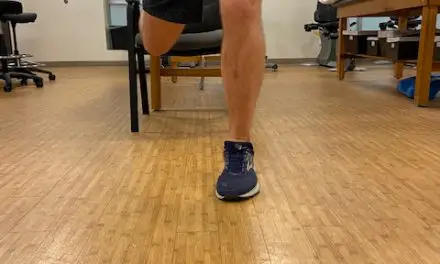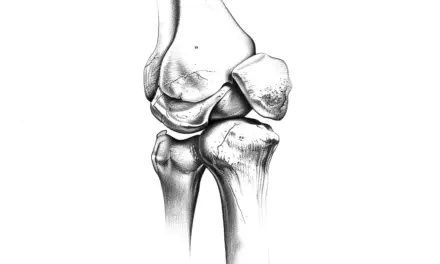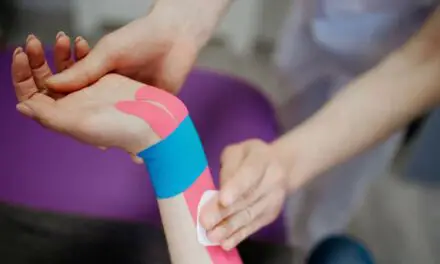When seeking a job in massage therapy:
1. Make a wish list of what you’re looking for in a job, such as the pay you want, the hours and days you would like to work, benefits you’re hoping to receive, and opportunities for advancement.
Narrow your job search to a specific environment you wish to work in, like at a spa, medical clinic, franchise, or a physical therapy or chiropractic clinic.
2. Think about what deal-breakers are for you. You may not accept employment if the pay isn’t at a certain level, or that you would be an employee and not an independent contractor, or whatever it is you decide isn’t going to work for you.
3. Prepare a resume and cover letter. Use spellcheck and grammar check.
4. Look online for job opportunities in your area and follow their instructions to the letter about how to contact them—whether to send your resume or call to arrange an interview (more about interviews in a future article), or whether to attend a job fair they may be hosting.
5. Be on time if you land an interview! Employers will assume that anyone who won’t get to the initial interview on time won’t get to work on time, either.
6. Dress professionally when you go for the job interview—even if you go to the business to drop off your resume.
Some people attend massage school with the thought of becoming an entrepreneur and opening their own business. But not everyone aspires to that. Some don’t want the responsibility.
Many would prefer to go to work, do massage, come home at the end of the day, and let someone else worry about the overhead, scheduling, record-keeping, and all the other things that go along with being a business owner. Employment, rather than ownership, is the right choice for many people.
Seeking a Job?
If the numerous massage therapist groups on social media are of any indication, plenty of massage therapy jobs are available for those who want to work. Listings of massage therapist jobs in general and massage jobs near your area appear to be at an all-time high. Some of the entrepreneurs who may have had to let go of their own businesses will find that massage therapist hiring is enjoying a boom at the moment.
The old scout adage, “Be prepared,” will help you land the job you want. Having a well-prepared resume and cover letter are keys to making a good impression on potential employers.
Resume basics
A resume is to inform potential employers of your contact information, education, skills, and work history. A professional resume may be chronological, listing your employment from the present to the beginning of your work life.
While it’s nice if that shows steady growth and experience in your career, that may not be the case if you’re fresh out of massage school and still relatively young without much job experience. You will have to make up for that with enthusiasm and a positive attitude during the job interview.
A functional resume focuses on skills relevant to the job, what you have done and are capable of doing without focusing on the time frame or workplace.
A combination resume is just that, a list of your skills and experience, along with your education and employment history in reverse chronological order. Most word processing programs and many Internet sites have resume templates that are user-friendly.
While a variety of skills looks great on a resume, so does longevity. Hopping from job to job may add to your experience, but having an excessive number of jobs in a relatively short time frame makes it appear that you may have problems maintaining employment, unless each job was superior to the one before it—salary-wise, responsibility-wise, or both.
When applying for a massage therapy job, your resume should list all your skills and certifications that go beyond what you learned in entry-level massage school. Don’t list every continuing education course you have ever taken, but do mention advanced training in specialties like orthopedic massage, oncology massage, prenatal massage, and the like.
Cover letter shows your value
A cover letter is necessary to go with your resume. It’s a brief introduction to your resume, highlighting your experience, and describing the job you are seeking. The letterhead should have all your contact information, and whenever possible, be addressed to the exact person who does the hiring. You can call area massage businesses or spas and ask who your resume should be addressed to, unless you are responding to an ad that already gives that information.
It’s risky, but sometimes successful, to go to businesses unannounced to drop off a resume. It’s risky because the manager or whoever is doing the hiring may not be there or may be busy, but sometimes successful because you might walk in at just the right moment when they need to hire someone.
Finding the right job
You want to find the right job for you. If you prefer working in a medically-oriented practice or a spa environment, look for the job that will fulfill your wishes. If you just want to do massage and don’t have a preference about the environment, you’ll have more choices of where to work.
If you are active in massage therapy groups on Facebook, that’s a good place to start looking. A quick perusal of this week’s posts in the North Carolina Massage Therapist’s Network shows a chiropractor seeking a part-time therapist; an entrepreneur with two city locations looking to hire two to three therapists with her ad that says she’s turning away 10 to 20 people a day; a spa located in a historic old house in a mountain town is hiring, and so on.
The same situation exists in the numerous state-specific massage groups all over Facebook. For example, a Florida massage group is full of solicitations for therapists in the beach and tourist attraction areas.
LinkedIn is another social network that is strictly for business with the capability for you to post your resume on your profile and a search feature that allows you to look for jobs. Indeed is also a popular website for job listings that allows you to post your resume and search by area.
The summer months are a busy time for spas located in resorts in many areas of the country. Resorts located in ski areas tend to be busy during all seasons. They are often popular vacation destinations in the summer when they discount room and condo rental rates, and they are more crowded in the winter months when skiing and snowboarding are in full swing. And so, work is available year-round. Other possibilities are medical spas and higher-end hotels with on-site spas, which are usually located in cities or tourist destinations.
Massage franchises are almost always advertising for therapists; they tend to be located in larger towns and cities. While some therapists look down on franchises, they’re a fact of life. Many work for them as a starting point in their career, and they view it as an entry-level situation and are not planning to make a life-long job out of it.
If your dream is to work for a pro-sports team, check their website for an employment link. Most major teams have one with an application process online. Steiner Leisure has been the sole provider for spa employees, including massage therapists, estheticians, and others on cruise ships since 1901.
Many hospitals are now hiring massage therapists. Sometimes for the benefit of staff members, sometimes for patients, or both. Visit their websites for general employment information.
Independent contractor or employee?
Many employers misclassify massage therapists as independent contractors because they do not want the financial responsibility of matching the Social Security taxes for employees. However, it’s relatively simple to figure out whether a work situation is one or the other.
Independent contractors are self-employed people who work in someone else’s business. They cannot be forced to hang around the office for no pay, waiting for clients who might or might not appear, or made to do other duties, such as running the front desk or cleaning and laundry (other than their own).
Independent contractors can be asked to work on certain days or hours, but they have the right of refusal. Independent contractors are not entitled to benefits such as insurance, vacation pay, or free continuing education (which franchises frequently offer their staff members).
An independent contractor is obligated to pay quarterly estimated tax (self-employment tax), and should receive a 1099-Misc from the business at the end of the year.
If the employer has behavioral control, such as requiring the therapist to take certain training, use certain tools or methods, and tell them where they should purchase supplies, chances are good that the worker should be classified as an employee.
The IRS makes clear distinctions between employees and independent contractors in a publication, Independent Contractor or Employee?. They also have Form SS-8, Determination of Worker Status for Purposes of Federal EmploymentTaxes and Income Tax Withholding. To be clear, it’s the employer’s responsibility to classify workers correctly.
You also have to be sure you are working within your scope of practice. Florida, for example, allows massage therapists to perform colon hydrotherapy if they have 100 hours of training in the procedure. Florida massage therapists are also allowed to use ultrasound and e-stim therapy, something that is considered in the scope of practice of chiropractors, not massage therapists, in most other states.
The COVID-19 pandemic effect on massage
COVID-19 has been challenging for many massage therapists, but business owners have been hit the hardest. When state-mandated shutdowns happened in many places, employees were able to sign up for unemployment, and PUA (Pandemic Unemployment Assistance) was extended to independent contractors as well.
When it was announced that loans were available to small businesses, a hullabaloo ensued when the money initially ran out very quickly, and much of it went to businesses with hundreds of employees instead of the small businesses with fewer employees.
Many business owners were left wondering how they were going to pay the office rent and sustain themselves until things returned to normal. Even when businesses did not have to close, owners found themselves faced with extra sanitation and intake procedures, extra time needed between appointments to implement those intakes, extra expenses for PPE (Personal Protective Equipment), buying expensive air filtering systems, and a decrease in business due to the number of people who got sick or did not feel safe coming to appointments.
It’s been a stressful time for many. Are we normal yet? Or have we just arrived at a new normal? It’s hard to tell. Restrictions have been lifted in many states, and while positive tests and deaths are going down in some states, they’re going up in others.
It is clear that COVID-19 has changed the landscape for those who do hands-on work with the public — in some cases — permanently. Some therapists have retired, while others have taken a hiatus or switched careers. Others have carried on, while making changes in the way they do business (masking, screening clients, etc.).
This has been a learning experience for many people, and it has been an especially valuable lesson that it’s always good to have a backup plan for surviving economically during a life-changing event. May better times be ahead for all of us.

Laura Allen, LMT
Laura Allen is President of Sales & Marketing of CryoDerm. A graduate of Shaw University and The Whole You School of Massage Therapy, Allen has been a licensed massage therapist since 1999 and an Approved Provider of Continuing Education under the NCBTMB since 2000. She has taught classes all over the U.S., Canada, and Europe.
She is the author of The Educated Heart, Cultural Crossroads of Healthcare and Healing, and numerous other books. Allen resides in North Carolina with her husband, James Clayton, and their two rescue dogs.





